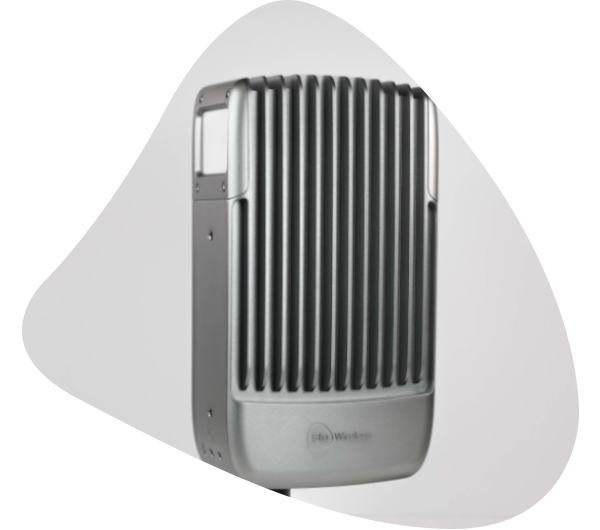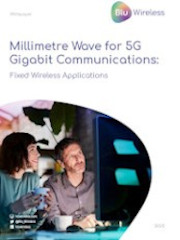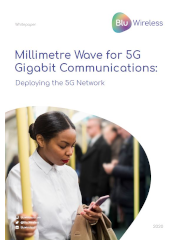Challenges unique to 5G
Deploying a 5G transport network is a capex intensive task that if not designed to meet end-user requirements from the outset will be difficult to manage and scale. Innovative but demanding requirements that have emerged with the advent of 5G such as the need for extremely dense networks and meeting the low latency requirements for advanced applications pose unique challenges for 5G backhaul and fronthaul deployments, otherwise known as xHaul.
Current solutions struggle to meet the requirements for backhaul and the unique fronthaul needs, as well as providing the reach, capacity, and availability at an economically smart cost. With our sophisticated and innovative mmWave equipment Blu Wireless can significantly reduce the cost and difficulty of deploying advanced 5G connectivity. This fibre-equivalent wireless technology completes 5G integrated access and 5G xHaul in the built environment at a fraction of the cost and with minimal disruption during deployment.
An xHaul solution for operators
In order for operators to maximise their return on investments in both spectrum and network infrastructure, it is economically sensible to separate the backhaul/fronthaul network (xHaul) from the customer network.
When using unlicensed mmWave spectrum for xHaul, costly licenced spectrum can be retained exclusively for customer access, ensuring high returns and a network performance that will not be compromised by having to share valuable spectrum resource. The unlicensed mmWave spectrum is ideally suited for 5G xHaul: it does not require any additional licensing fees and technologically the equipment will deliver the required bandwidth, speed and latency. mmWave wireless technology delivers a unique solution to meet the growing demands for 5G and next-generation communications.

mmWave for xHaul: Undeniable advantages
With 5G network deployments picking up speed, a robust wireless solution is the effective choice for backhaul and fronthaul. Previous microwave bands that used spectrum up to 42GHz worked well for 4G, but in the long term they will not be able to meet the significantly higher data rates and increased capacity of 5G.
By using mmWave solutions higher up the spectrum, and tapping into the 14GHz available between 57GHz and 71GHz, we bypass traditional backhaul/fronthaul challenges, and offer undeniable advantages to operators:

Advantages of mmWave

Ease of deployment
No fibre means easier, faster and cost-effective deployment

Ultra-fast data transmission
High throughput and low latency mmWave nodes deliver extremely high link speeds

Security
Secure hardware encryption as safe and reliable as fibre

Reach
Robust and flexible connections enable deployment across large areas

Network density
Removing network congestion without impacting effective network design

Scalability
Throughput can be flexibly scaled to deliver higher 5G network coverage
Accelerating the 5G rollout
At 3+ gigabits per second per link, our dual link ORAN compatible mmWave backhaul and fronthaul product provides a compelling solution for small cell networks using the license exempt 57-71 GHz band. These high levels of speed are essential in supporting the denser networks and higher bandwidth needed for 5G deployments.
The high performance, scalability, and flexibility of mmWave equipment can future proof the broadband industry in the face of rising multi-device connectivity, ensuring an outstanding experience for customers and a high return on investment for operators.

Download More Information

Big data requires massive data upload
mmWave is transforming 5G connectivity in sectors as varied as smart cities, maritime, public safety, defence, and transport due to its ability to uplink vast quantities of data quickly. Read our insight paper.
Download
mmWave for 5G Gigabit Communications: FWA Whitepaper
The license-exempt 60 Ghz mmWave spectrum delivers multi-gigabit, fibre-like performance for fixed wireless access applications. Read our whitepaper.
Download
mmWave for 5G Gigabit Communications: Deploying the 5G Network Whitepaper
The introduction of backhaul networks represents more than one order of magnitude improvement in data rate, capacity and reduction in communication link latency. Read our whitepaper.
Download
5G xHaul News, Views and Insights
Read more about the role that mmWave technology plays enabling 5G Backhaul

